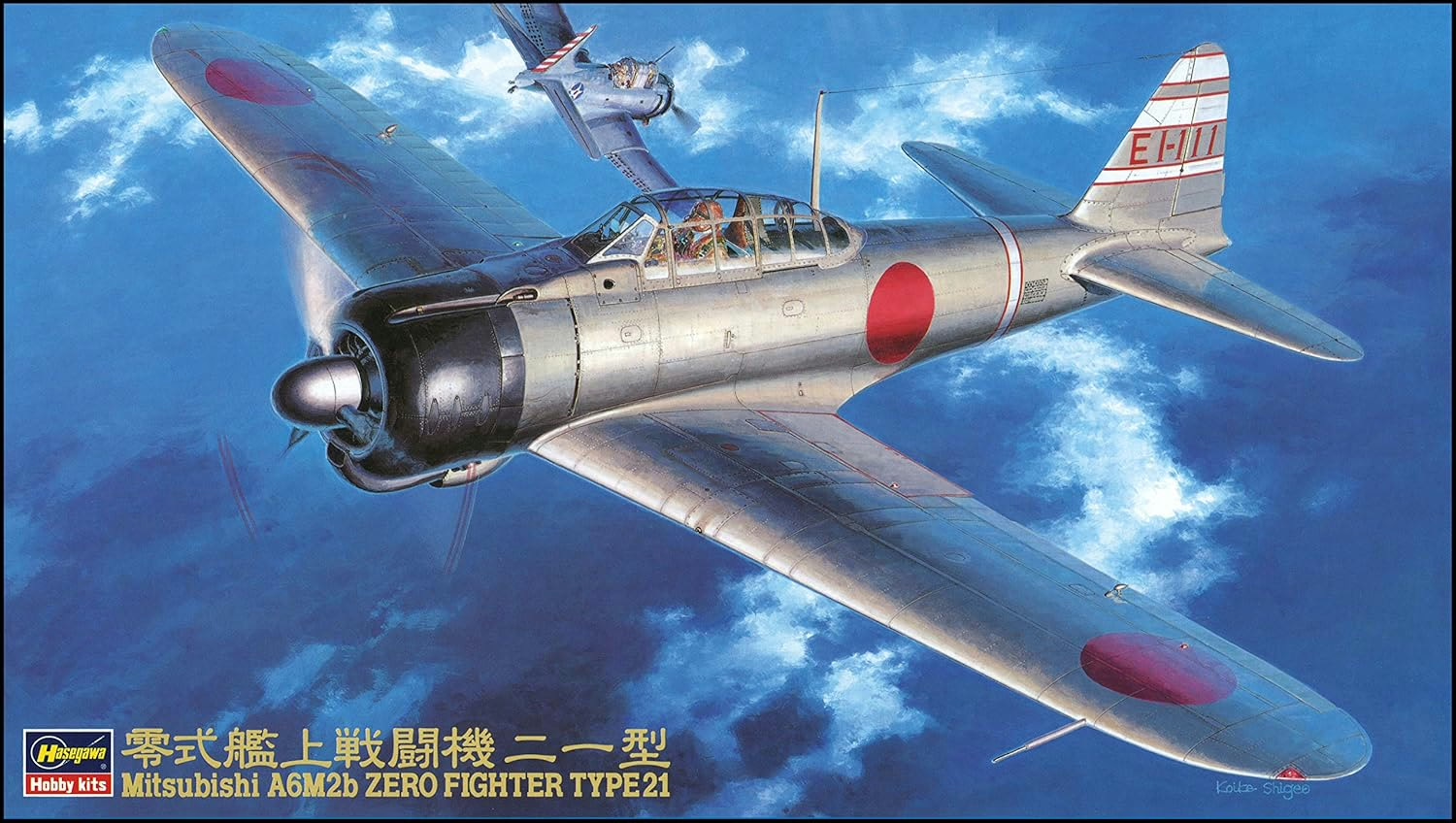Mitsubishi A6M Zero History
The phenomenally successful Mitsubishi A6M Zero originated with a specification of 1937 which called for a carrier-borne fighter of high performance to succeed the Mitsubishi A5M. A prototype – the A6M1, with a 780 hp Zuisei 13 radial engine – designed by a team led by Jiro Horikoshi made its maiden flight on 1 April 1939. Production began in 1940 with the A6M2 Model 11, the only major change being the adoption of the more powerful Sakae 12 engine. It was known to Japanese airmen as the Rei Sentoki, or Zero Fighter, a term commonly abbreviated to Reisen.
Following operational evaluation of fifteen Zeros in China, the Japanese Navy Air Force (JNAF) officially accepted the type at the end of July 1940. Sixty-four Mitsubishi A6M Zero Model 11s were completed, the Model 21 with folding wingtips following these into production in November 1940. This was the major JNAF version at the time of Pearl Harbor, although in mid-1941 the A6M3 Model 32 made its first appearance.

Similar at first to the A6M2, except for its 1,300 hp supercharged Sakae 21 engine, the A6M3’s performance was later improved by removing the foldable tip protection of each wing. This however, reduced the Mitsubishi A6M Zero’s manoeuvrability, and the full-span wing, in non-folding form, was restored in the A6M3 Model 22.
In the air fighting over Guadalcanal early in 1943 it began to be apparent that Zero was no longer maintaining its early superiority over its Allied opponents. Hence the A6M5 Model 52 was developed, retaining the Sakae 21 engine but having a shorter-span wing which was, in essence, that of the Model 32 with the square tips rounded off. Sub-types produced included the A6M5a Model 52A (strengthened wings and increased ammunition), A6M5b Model 52B (increased armament and armour protection), and A6M5c Model 52C (further protective armour, two 20 mm and three 13 mm guns), all of which appeared in 1944.
In 1945 Mitsubishi built four hundred and sixty-five Mitsubishi A6M Zero examples of a special Kamikaze version, the A6M7 Model 63, and several hundred more Zeros of all versions were also expended in suicide attacks.
A total of ten thousand nine hundred and thirty-seven Zeros of all versions was built by VJ-day. Mitsubishi built three thousand eight hundred and seventy-nine of these, but the principal manufacturer was Nakajima, whose factories produced six thousand two hundred and seventeen landplane Mitsubishi A6M Zeros and three hundred and twenty-seven examples of a twin-float version designated A6M2-N. In addition, five hundred and eight A6M2-K 2-seat conversion trainers were built by Hitachi and Sasebo Naval Air Arsenal, and six A6M5-Ks by Hitachi and Omura Naval Arsenal.
Mitsubishi A6M Zero Technical Drawings, Blueprints & Scale Model Plans
 Mitsubishi A6M Zero drawings & plans
Mitsubishi A6M Zero drawings & plans









